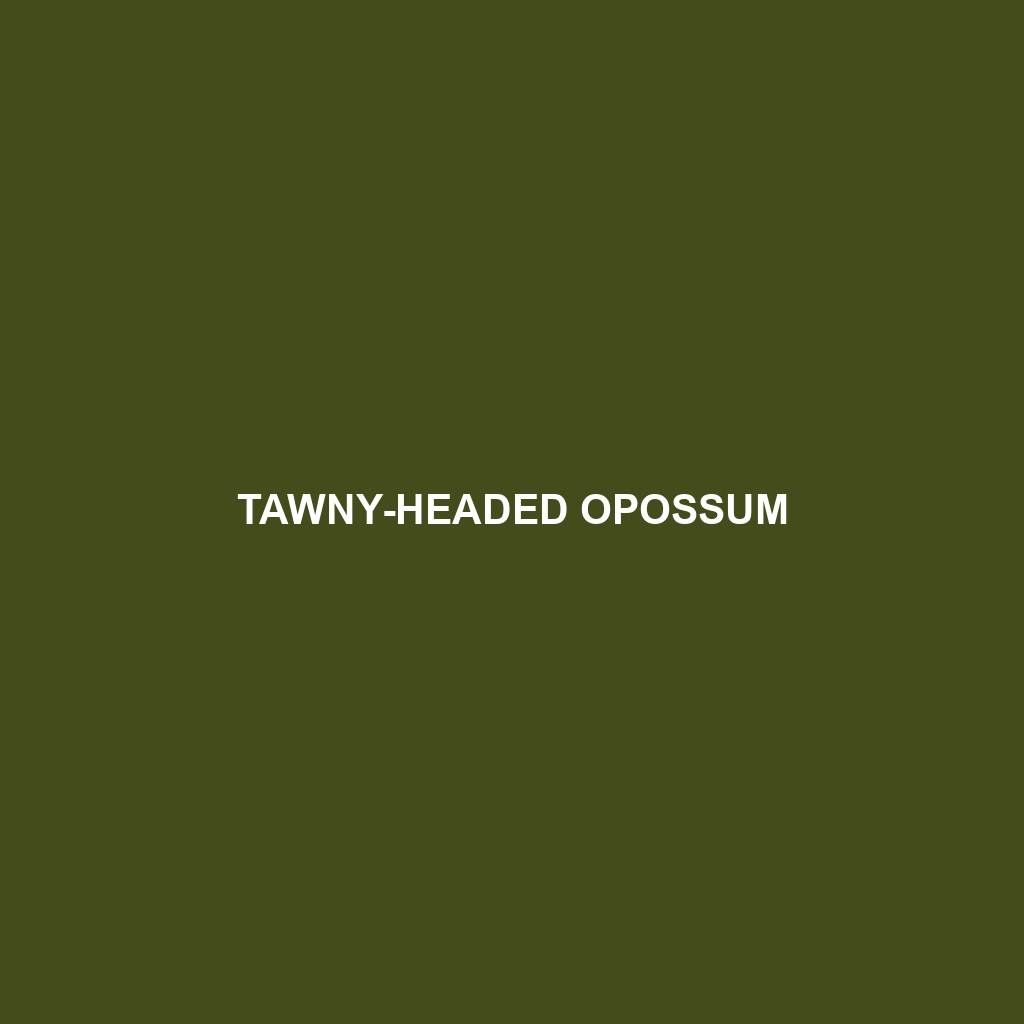Tawny-headed Opossum (Monodelphis scalops)
The Tawny-headed Opossum, scientifically known as Monodelphis scalops, is a small, unique marsupial native to South America. Distinguished by its striking tawny-colored head, this opossum is known for its solitary and nocturnal lifestyle. Despite its relatively inconspicuous presence, the Tawny-headed Opossum plays a significant role in its ecosystem, contributing to seed dispersal and insect population control.
Physical Characteristics
Size: The Tawny-headed Opossum is a small marsupial, typically measuring between 10 to 14 centimeters in body length, with a tail length of approximately 8 to 12 centimeters. Adults generally weigh between 25 to 50 grams.
Coloration: True to its name, this opossum features a distinctive tawny or reddish-brown coloration on its head. Its body fur is usually a mix of grayish-brown tones, providing effective camouflage in its natural habitat.
Special Features: Unlike many other opossums, the Tawny-headed Opossum lacks a marsupial pouch. Females carry their young on their teats after birth until they are sufficiently developed to detach and explore their surroundings.
Behavior
Social Interactions: The Tawny-headed Opossum is primarily solitary, coming together with others only during the breeding season. Interaction between individuals outside of mating is infrequent.
Feeding Habits: This opossum is omnivorous, with a diet that includes insects, small vertebrates, fruits, and seeds. Its feeding behavior helps regulate insect populations and aids in seed dispersal, making it a crucial component of its ecosystem.
Ecological Roles: Apart from controlling insect populations and dispersing seeds, the Tawny-headed Opossum also serves as prey for larger predators, thus maintaining a balance within the food web.
Habitat and Adaptations
Natural Habitat: Tawny-headed Opossums are typically found in tropical and subtropical forests, often in areas with dense underbrush. They prefer habitats that provide ample cover and food resources.
Adaptations:
Nocturnal Lifestyle: As nocturnal creatures, they have adapted to low-light conditions with enhanced night vision and acute senses of smell and hearing.
Arboreal and Terrestrial Abilities: They are adept climbers and can navigate both the forest floor and trees, enhancing their ability to find food and evade predators.
Nest-building: These opossums build nests using leaves and other forest debris, which provide shelter and protection for their young.
Conservation Status
The Tawny-headed Opossum is currently not listed as endangered, but like many species, it faces threats from habitat destruction and fragmentation due to deforestation and human encroachment. Conservation efforts aimed at preserving tropical and subtropical forests indirectly benefit this species by maintaining its natural habitat.
Fun Facts
Reproductive Strategy: Unlike many other marsupials that have pouches, the Tawny-headed Opossum carries its developing young attached to its teats, a unique adaptation among its relatives.
Agile Climbers: Despite their small size, these opossums are remarkably agile and can deftly climb trees and navigate through dense underbrush in search of food.
Insect Control Agents: Their predation on insects helps manage pest populations, highlighting their ecological importance beyond just seed dispersal.
The Tawny-headed Opossum, though small and often overlooked, is a fascinating example of the diversity and adaptability of marsupials. Understanding and protecting such species is essential for maintaining the health and balance of their ecosystems.
